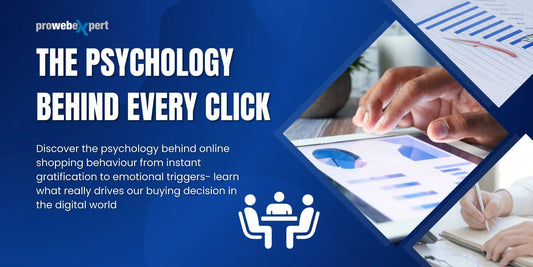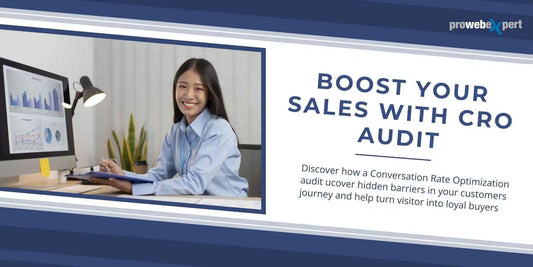
The Ultimate Guide to Connecting Shopify with Facebook for Maximum Sales & Ads Performance
Share
What is Shopify?
Shopify is one of the leading e-commerce platforms globally, empowering countless businesses to establish, personalize, and oversee their online storefronts. Whether catering to small startups or large corporations, Shopify provides a comprehensive solution tailored to meet various business requirements. Renowned for its intuitive interface, extensive integration capabilities, and scalability, Shopify allows enterprises to expand without being hindered by the technical challenges associated with managing an online store. Ecommerce Development Agencies often recommend Shopify for businesses aiming to scale efficiently.
For businesses seeking to enhance their visibility and sales opportunities, Shopify presents robust integration possibilities. Notably, linking Shopify with Facebook has emerged as one of the most effective methods to fully leverage the advantages of both platforms. But what makes this integration essential for your e-commerce success? Let us explore this further.
Why Integrating Shopify with Facebook is Essential for E-Commerce Success
The shopping habits of consumers have undergone a significant transformation over the years, largely due to the impact of social media on purchasing choices. Facebook, boasting billions of active users, serves not only as a venue for social engagement but also as a bustling marketplace. For businesses aiming to thrive in the current competitive e-commerce environment, the integration of Shopify with Facebook has transitioned from being a mere option to an essential requirement.
Here’s why this integration matters:
-
Widen Your Audience: Connecting Shopify with Facebook enables your products to access a large international market. The extensive user base of Facebook lets you present your store to countless prospective buyers.
-
Streamlined Shopping Experience: Shoppers can explore and buy your products straight from Facebook or Instagram without exiting the app, creating a smooth experience and minimizing abandonment rates.
-
Enhance Ad Effectiveness: Facebook's sophisticated advertising features enable you to execute highly focused campaigns. By connecting your Shopify store to Facebook, you guarantee that your advertisements target the appropriate audience at the optimal moment.
-
Maintain Your Edge: Online retailers that link Shopify with Facebook gain a distinct advantage, as they can utilize social media to engage with customers, implement dynamic advertising, and enhance the shopping experience.
Benefits of Connecting Shopify with Facebook
-
Streamlined Shopping Journey: The collaboration between Facebook and Shopify offers customers a fluid shopping journey. They can browse and complete their purchases all within the same platform without the need to switch.
-
Improved Product Exposure: Your Shopify inventory connects with Facebook, guaranteeing that all your products are displayed on Facebook Shops and Instagram. This boosts your store's exposure and enhances the likelihood of making sales.
-
Targeted Advertising: Utilize Facebook Ads to reach specific audiences by considering their location, demographics, interests, and shopping habits. Thanks to Shopify’s integration, you can directly sync your product catalog with Facebook Ads Manager.
-
Automated Updates: Any changes you make to your product inventory in Shopify will automatically update on Facebook, conserving time and effort.
-
Access to Analytics: Obtain comprehensive insights regarding your product performance, advertising interactions, and customer habits. This data enables you to refine your marketing approach for improved return on investment.
-
Retargeting Opportunities: The integration provides the ability to retarget shoppers who have browsed your store but failed to complete a purchase, enhancing your likelihood of conversion.
Step-by-Step Guide to Connecting Shopify with Facebook
Here’s how you can integrate Shopify with Facebook to unlock its full potential:
1. Set Up a Facebook Business Account:
If you don’t already have one, create a Facebook Business Manager account. This is essential for managing your Facebook page, ad accounts, and product catalog.
2. Install the Facebook Channel App in Shopify:
Log in to your Shopify admin panel and navigate to the Shopify App Store.

Search for the “Facebook Channel” app and click on “Add App.”

3. Connect Your Facebook Page:
Once the app is installed, link your Facebook business page to Shopify. Ensure that the Facebook page is properly set up, and you are an admin.


4. Sync Your Product Catalog:
During the integration process, Shopify will prompt you to sync your product catalog with Facebook. This allows your products to appear on Facebook Shops and Instagram Shopping.

5. Enable Facebook Shop:
After syncing, you can enable Facebook Shop, which allows customers to browse and make purchases directly from Facebook or Instagram.
6. Set Up Ads Through Shopify:
With the integration complete, you can create and manage Facebook ad campaigns directly from your Shopify admin panel. This saves time and makes it easier to track performance.

Understanding Facebook Pixel
What is Facebook Pixel?
Facebook Pixel serves as an effective analytics instrument that monitors the activities of visitors to your Shopify store. This small snippet of code, when integrated into your store, enables you to collect essential data regarding customer interactions, enhance your advertising strategies, and assess the success of your marketing campaigns. Shopify Setup Experts professionals often emphasize the importance of Facebook Pixel for optimizing marketing efforts.
Why is Facebook Pixel Important?
-
Conversion Tracking: Gain insight into which advertisements or campaigns are resulting in sales.
-
Audience Building: Develop tailored audiences derived from website visitors, abandoned shopping carts, or completed purchases.
-
Ad Optimization: Leverage the data to present ads to individuals most likely to convert, enhancing your return on investment.
-
Retargeting Customers: Monitor users who have engaged with your website and reach out to them with pertinent ads to promote purchases.
How to Connect Facebook Pixel with Shopify
1. Create a Facebook Pixel:
Log in to your Facebook Business Manager, go to the “Events Manager,” and create a new Pixel.
2. Copy the Pixel ID:
Once created, you’ll get a unique Pixel ID. Copy this ID for later use.
3. Integrate with Shopify:
In Shopify, navigate to Online Store > Preferences.
Paste your Pixel ID in the “Facebook Pixel” section and save.
4. Verify Pixel Installation:
Use the Facebook Pixel Helper Chrome extension to check if the Pixel is correctly installed on your Shopify store.
How Facebook Pixel Helps with Conversion Tracking
Facebook Pixel tracks user interactions, such as viewing a product, adding items to the cart, and completing a purchase. This data is invaluable for creating targeted ad campaigns and improving their performance. With Pixel, you can measure ad effectiveness and focus on what works best for your business.
Conclusion
Establishing a connection between Shopify and Facebook is an essential strategy for achieving success in e-commerce. This integration allows you to present your products to a vast audience, utilize targeted advertising, and ensure a smooth shopping experience for customers. Utilizing tools such as Facebook Pixel enables you to monitor customer interactions, refine your advertising efforts, and significantly enhance conversion rates.
By adhering to the procedures detailed in this guide, you will be positioned to develop a highly efficient integration between Shopify and Facebook that increases sales and optimizes advertising performance. Setting up Facebook with Shopify is a crucial step in maximizing your e-commerce potential. Begin today to fully realize the potential of your e-commerce enterprise!



